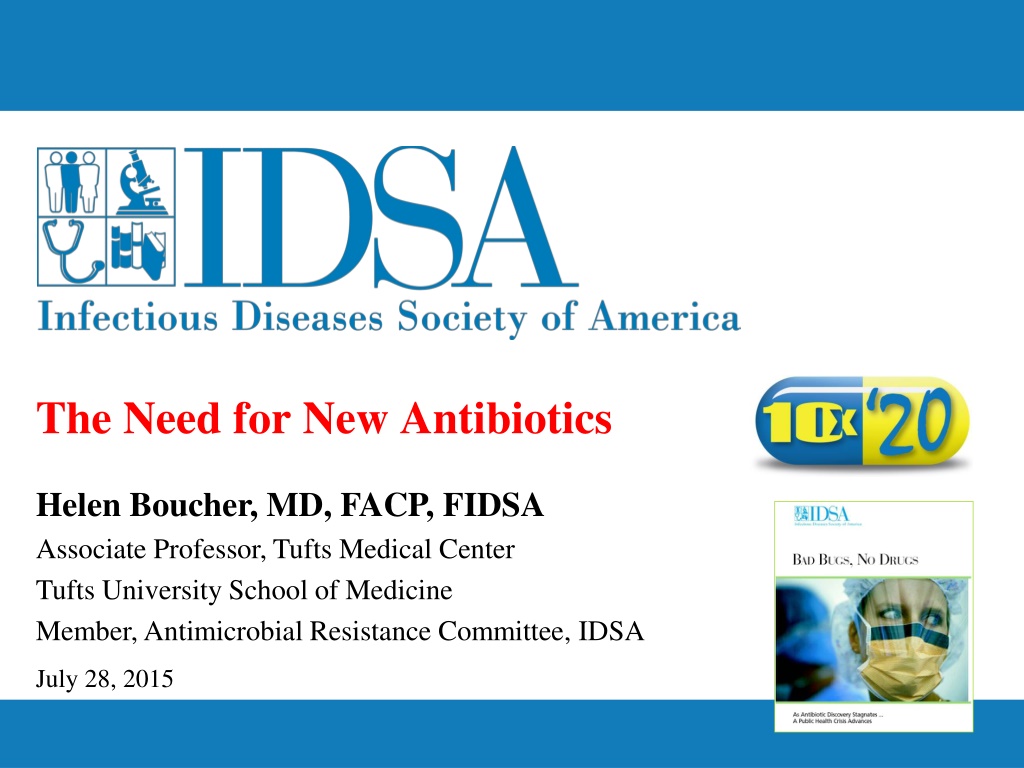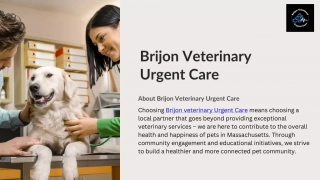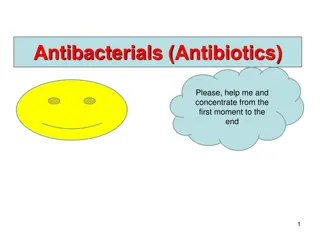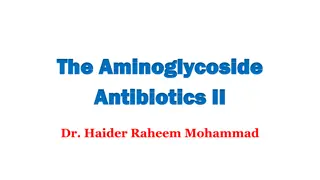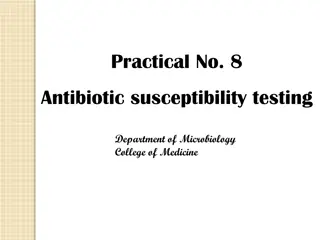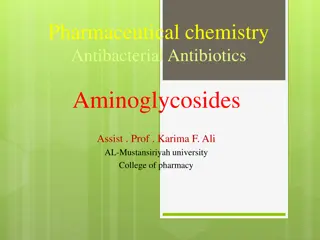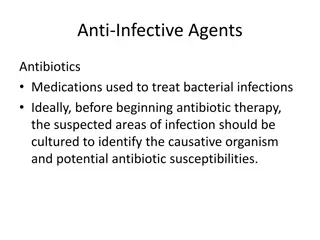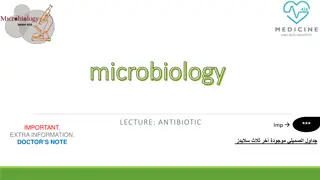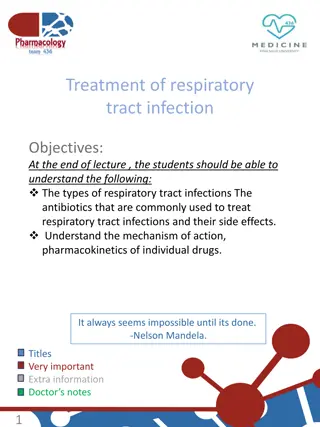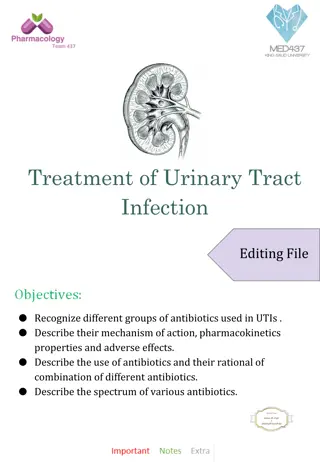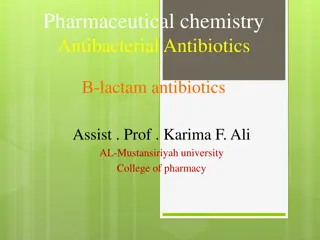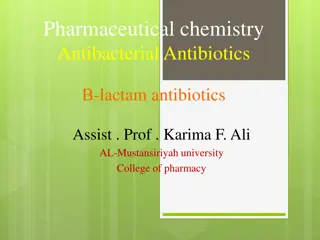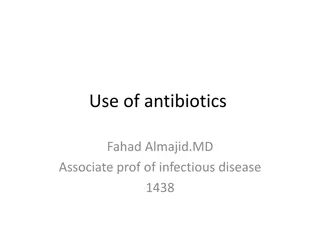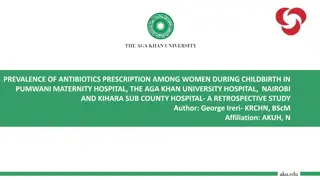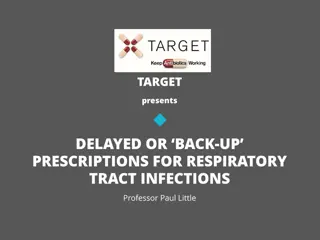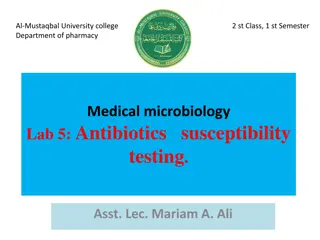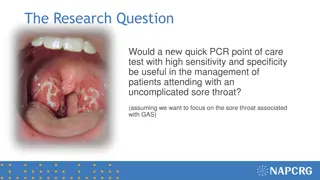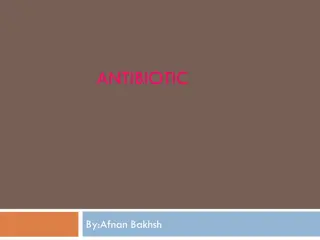The Urgent Need for Developing New Antibiotics
Antibiotic resistance has led to devastating consequences, with lives lost and individuals suffering from resistant infections. This urgency is highlighted through real-life cases of individuals facing complications due to antibiotic-resistant bacteria. The narrative follows a 46-year-old man with end-stage cardiomyopathy who encounters recurrent infections requiring extensive antibiotic treatment. The challenges and complexities of treating these infections underscore the critical need for the development of novel antibiotics to combat resistant strains.
Download Presentation

Please find below an Image/Link to download the presentation.
The content on the website is provided AS IS for your information and personal use only. It may not be sold, licensed, or shared on other websites without obtaining consent from the author.If you encounter any issues during the download, it is possible that the publisher has removed the file from their server.
You are allowed to download the files provided on this website for personal or commercial use, subject to the condition that they are used lawfully. All files are the property of their respective owners.
The content on the website is provided AS IS for your information and personal use only. It may not be sold, licensed, or shared on other websites without obtaining consent from the author.
E N D
Presentation Transcript
The Need for New Antibiotics Helen Boucher, MD, FACP, FIDSA Associate Professor, Tufts Medical Center Tufts University School of Medicine Member, Antimicrobial Resistance Committee, IDSA July 28, 2015
IDSA Membership Administration Primary Professional Activity 7%2% 2% 5% 5% 7% Basic Research Clinical Microbiology Clinical Research Hospital Epidemiology Patient Care 4% 4% 3% 3% 10,000+ strong 8% 8% Majority physicians providing clinical care 14% 14% 54% 54% 3% 3% Public Hlth 2
Lives Devastated/Lost Due to Antibiotic Resistant Infections Premature Death Premature Death Life-altering Disability Life-Altering Disability Mariana Bridi da Costa (22 yr)--Dead Rebecca Lohsen (17 yr)--Dead Tom Dukes: colostomy, lost 8 colon Carlos Don (12 yr)--Dead Ricky Lannetti (21 yr)--Dead Addie Rerecich, 11yo Double lung transplant Stroke, nearly blind $6 million hospital bill www.AntibioticsNow.org 3
The Need for New Antibiotics Case 46 year old man with endstage cardiomyopathy (weakened heart muscle), diabetes, obesity Heart unable to pump sufficiently; LVAD (pumping device) placed 3/31/11 Works full time Married, sons aged 14 and 15 May, 2011 local infection; oral abx December, 2011 new brown foul smelling discharge managed with wound care and oral antibiotics
Case (continued) Sept, 2013 LVAD complications new LVAD 9/25/13 Three months later (Dec, 2013) Pain, redness and drainage from LVAD MSSA Treated with IV cefazolin, then cephalexin Slow improvement followed by worsening Feb, 2014 blood cultures + skin infection Wound with new E. coli May, 2014 worsening drainage; wound cultures + P. aeruginosa and Corynebacterium spp. Progress Slow response to IV therapy Transition to oral ciprofloxacin + clindamycin (June, 2014)
Case (continued) Improved to the point that antibiotics were stopped December, 2014 March, 2015 pain and increased drainage; wound + P. aeruginosa (panS), E. coli, Corynebacterium spp. Admitted, iv meropenem, vancomycin thru 4/10/15 5/11/15 presented with pain, increased drainage, elevated white blood cells, inflammation Admitted, IV ABX
Case (continued) Late May, 2015 P. aeruginosa 2 strains Both resistant to ciprofloxacin (last oral option) 1 resistant to meropenem, susceptible to tobra, amikacin (toxic to kidneys) Early June, 2015 Increased pain and drainage despite ongoing abx Not a candidate for other antibiotics Not a candidate for LVAD exchange Not a candidate for transplant Discharged to hospice
Antibiotic Resistance Threats Grow Centers for Disease Control and Prevention (CDC) Report Conservative estimates indicate that over 2 million Americans are infected and sickened every year by antibiotic resistant bacteria and at least 23,000 die. The actual numbers are likely far higher 8
Carbapenem-Resistant Enterbacteriaceae (CRE) One example of an urgent threat according to CDC 9,000 drug resistant infections and 600 deaths per year Resistant to all or nearly all currently available antibiotics CDC confirmed CRE in healthcare facilities in 44 states About 4% of U.S. short-stay hospitals had at least one patient with a serious CRE infection during the first half of 2012. About 18% of long-term acute care hospitals had one Up to half of all bloodstream infections caused by CRE result in death 2015 CRE outbreaks related to duodenoscopes in CA, WA 9
New Type of CRE Posing Additional Threats Some resistant bacteria, like CRE, are particularly difficult to treat because they produce enzymes that destroy powerful antibiotics. Most CRE in the U.S. including the type in the 2011 NIH Clinical Center outbreak that sickened 18 and killed 11 produce Klebsiella pneumoniae carbapenemase (KPC) However, New Delhi metallo- -lactamase (NDM) producing CRE have the potential to add to this burden 2009-2012: 27 patients with NDM-producing CRE in the US confirmed by CDC 2013-2014: 69 patients with NDM-producing CRE in the US (44 were from IL) NDM is reported most commonly in India (where it is believed to have originated) and Pakistan, but is spreading worldwide as people travel 10
NDM-Producing CRE, January 2015 11 Centers for Disease Control and Prevention
Antibiotic Resistance: Current Realities for Patients and Physicians The only antibiotic remaining to treat many Gram-negative bacterial infections (like CRE) is Colistin Colistin is toxic; it causes kidney failure; its efficacy is questionable Gram-negative bacteria are now developing resistance to Colistin Current alternatives for these patients: Do you want to die, or to be on dialysis for the rest of your life or until you can get a kidney transplant? 12
Antibiotic-Resistant Bacteria: Economic Burden Antibiotic resistant bacterial infections result in: Additional $21-34 billion cost annually to US healthcare system Additional 8 million hospital days New antibiotics to address unmet needs could allow us to safely and effectively treat patients and discharge them more rapidly, saving considerable cost RR Roberts, CID 2009:49, 1175-1184; PD Maudlin, AAC 2010:54, 109-115 13
Status of IDSA 10 x 20 Initiative Progress, thanks to Congressional action, but significant unmet needs remain CID April, 2010; http://www.idsociety.org/10x20/
New Antibiotics: The PATH Forward Key barrier to developing antibiotics for unmet needs (like CRE): Inability to find patients and funding for traditional, large scale clinical trials Bipartisan PATH Act, S. 185, would make these trials feasible by establishing a new Limited Population Antibacterial Drug FDA approval pathway. (Similar legislation already approved by the House with overwhelming bipartisan support.) Many safeguards (in PATH and other policy initiatives) to ensure these drugs are safe and effective and used appropriately Bottom line: Without the PATH Act, many of the antibiotics patients need will not be able to be developed 15
IDSAs Goal: New Antibiotics to Save Lives Prior generations gave us the gift of antibiotics Today, we have a moral obligation to ensure a robust, renewable antibiotic pipeline for current and future generations The PATH Act, S. 185, is a critical component of this effort. Thanks to Senators Orrin Hatch and Michael Bennet for their leadership 16
Case 47 year old female school teacher presents with pain upon urination, lower abdominal pain Started on standard oral therapy - ciprofloxacin Two days later she comes back and appears ill with ongoing new chills, nausea and back pain High fever, exam notable for new right flank tenderness Urine shows signs of infection Labs: elevated white blood cells Therapy advanced to guideline therapy for kidney infection; she looked well enough to go home One dose IV ceftriaxone, then oral bactrim http://cid.oxfordjournals.org/content/52/5/e103.full.pdf+html
Case continued Two days later Substantially worse, acutely ill, high fever, low BP, requires hospitalization for intravenous hydration as unable to eat or drink; 2 episodes of vomiting Exam elevated HR, ill appearing, worsening right flank tenderness Despite antibiotic therapy, urine culture grows K. pneumoniae, ESBL producing Resistant to ciprofloxacin, ceftriaxone, TMP/SMX Admitted to hospital and treated with imi/meropenem
Lessons from this case Infections caused by resistant pathogens are serious and not entirely uncommon This could happen to you or your children
